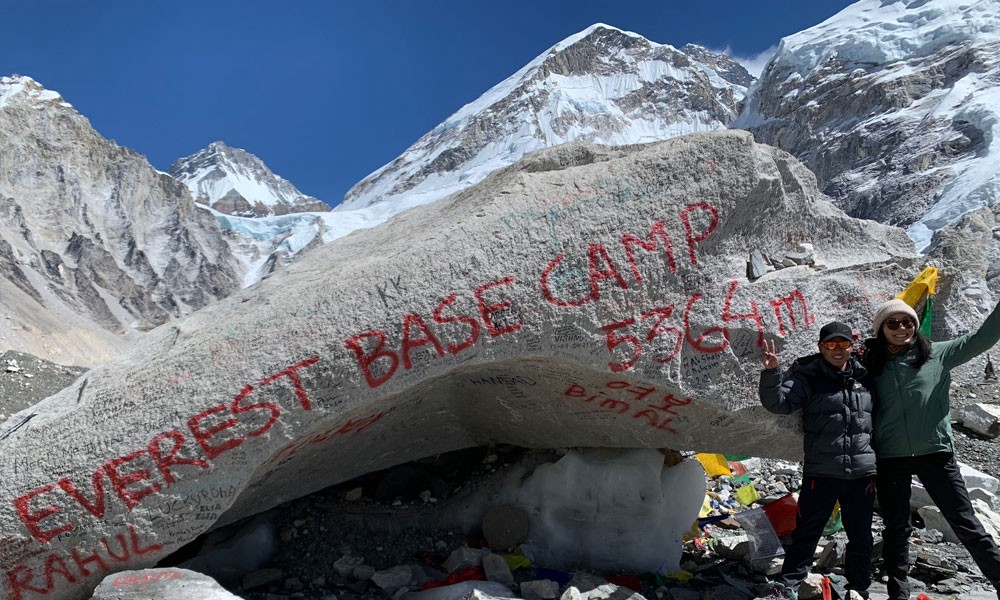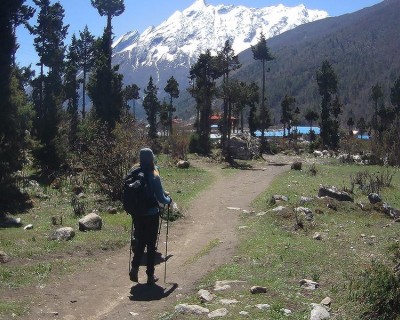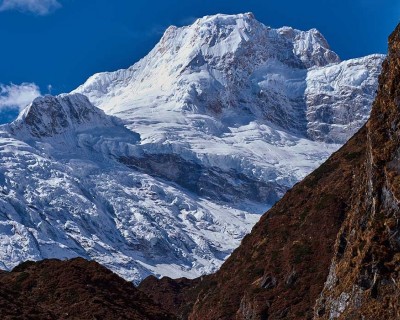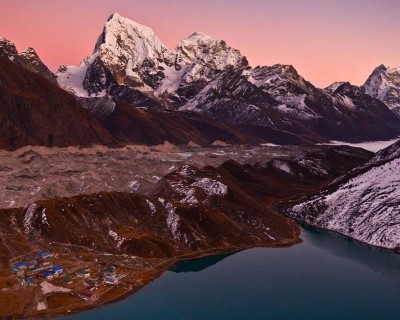Tips for Everest Base Camp Trek- Everest Base Camp for Beginners
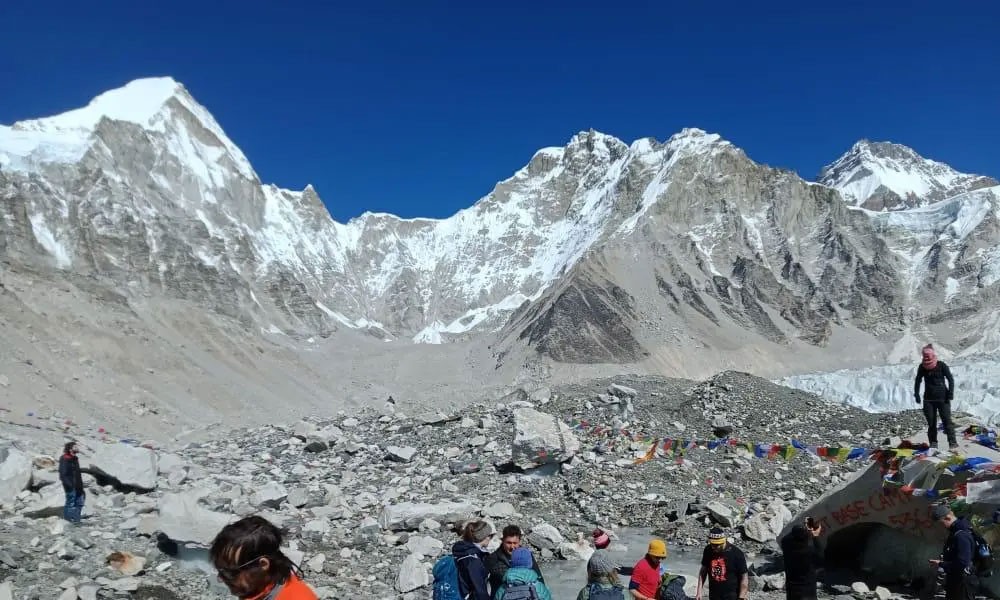
Choose an Ideal Package
I personally feel the most significant and important tip in Everest Base Camp for beginners
is selecting an ideal package. Let’s be real here: you might have often heard different opinions from travelers who have visited the same place. What do you think might be the major factor that influenced them to have different opinions? It is the experience!!
Your overall experience depends on what kind of package you have chosen for your exploration and what perks it packs. Beginners who end up going for the rushed package just because they are cheap often end up turning back or falling victim to altitude sickness.
So, as a beginner trekker, your first emphasis should be on the pace of the journey and how much rest you will get along the trekking route. Value the experience over cost; wait and save up for a more gratifying experience than compromising your overall health.
12 Day Everest Base Camp Trek packs the perfect itinerary plan if you want to explore the foothills of the tallest peak in the world without having to worry about the physical toll and experience.
Don’t Miss the Training Part
While doing the Everest Base Camp trek, I mostly encounter two types of people along the route. The first kind of people were really enjoying the experience and mostly positive, living in the moment. And the second type, they were mostly trying to keep up with the first kind, I didn’t feel like they were actually enjoying the journey. They were more about dragging themselves from one point to another.
So, my suggestion is, don’t be the second type. It really sucks to be the second type in this once-in-a-lifetime journey where you are supposed to make memories and not just push yourself to move forward. How to be the first kind of people? Don’t slack off while training for the trek.
You don’t need to be in top shape for this trek; just a basic level of fitness and a good amount of preparation will ensure a remarkable and memorable exploration. An adequate amount of strength and stamina training will make a big difference in experience. If you are a beginner trekker who doesn’t have much experience in high-altitude treks, you definitely shouldn’t skip the training part.
Note: 3 to 6 weeks is the normal training period for high-altitude Himalayan treks. But, you can adjust the period as per your need. Consult professional trainers or trek guides to design an effective training program.
Trek Steady and Pay Attention to Your Body Language
Trekking steadily is another key tip in Everest Base Camp for beginners. Yes, you will move along the itinerary plans during every day of your trek and will have to adhere to specific schedules. One of the major mistakes I have seen beginner trekkers make on this route is that they worry too much.
I have seen beginner trekkers often feel like they are dragging the group down with their slow pace and that their course may affect or ruin the overall itinerary plan. Well, first of all, relax; you are not affecting any itinerary plans or dragging the group back. The trekking packages in Nepal are designed for you to walk slowly and enjoy the experience.
Don’t take it as a marathon; there isn’t a gold medal waiting for you at the end of the road. Maybe there is, if you want to buy it as a souvenir, I don’t know. But, definitely not for being the first to reach the marked point among the fellow trekkers in your group.
If you rush to high altitudes before your body properly adapts to the new environment, you will put yourself at risk of altitude sickness. Relax, trek slowly, take short breaks along the route, and relish the magnificent beauty. Also, pay attention If you start showing any symptoms of altitude sickness, consult with your guide immediately.
Hydration, Nutrition, and Acclimatization
If you are wondering about the key factors that will influence the enjoyability scale of your journey, its hydration, nutrition, and acclimatization. Let’s start with hydration; you will lose a significant water level from your body while doing the long hours of trek. So, to keep the water level balanced and prevent altitude sickness, as well as to move more comfortably, you should drink at least 3 to 4 liters of water per day.
Similarly, acclimatization is a secret ingredient to prevent altitude sickness while doing high-altitude adventures. The more rest period you get, the more time your body has to rest and acclimatize to newfound altitudes before pushing even further. It also doesn’t take a toll on your body, and you will be able to move more comfortably as you don’t physically exhaust yourself.
Nutrition is another major element that determines your well-being during the long trekking journey. Beginner trekkers should be aware of this factor that you might feel loss of appetite as you ascend to higher altitudes. Instead of switching to packed food or just going for the taste, I recommend you to eat a balanced nutritious meal. Experts recommend that when you are feeling loss of appetite forcing yourself first few bites will work and your body will begin to accept food gradually.
Note: Fuel yourself with healthy and nutrient-rich meals, your energy level will entirely depend on it. F.Y.I, eating fat-rich dishes when you have to trek for long hours is really a dumb move (speaking from experience).
Don’t Forget Snacks and Energy Bars
.JPG)
My another personal tip on the Everest Base Camp for beginners is that do not forget to pack your favorite snacks, energy bars and drinks during your trip. If you are planning to buy snacks, drinks, and chocolate bars at the teahouses along the route, there are actually two drawbacks.
First, you might not find your favorite snacks, chocolate bars, or drinks at the teahouses due to their remoteness. Second, they are more expensive on the mountain, as the transportation medium at the Everest region is limited; the higher you ascend, the relatively higher the costs for even basic commodities.
So, it will be best if you buy your favorite snacks in the city areas, and if you buy in bulk you will also get discounts. Also, don’t forget to add some electrolytes while packing; they are really a lifesaver, especially when you are running low on energy.
If Possible, Go Vegetarian
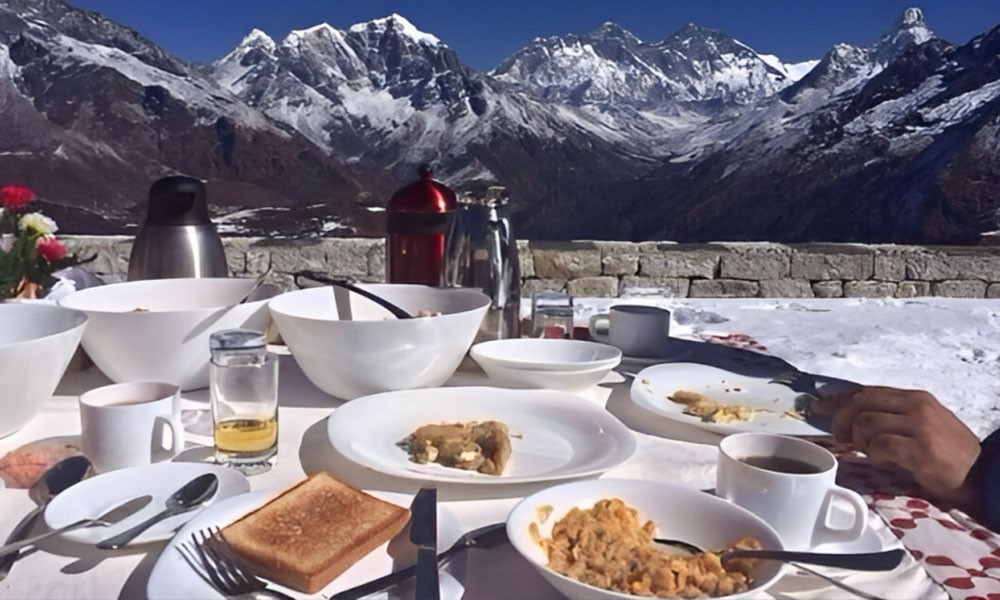
If you have never done Himalayan trekking adventures in Nepal, then you might not be familiar with how the transportation of goods works at remote high altitudes. It generally takes a long period to transfer goods to the top of the mountain from the cities.
As there isn’t a viable road transport in the Everest region, it takes several days for the commodities to reach the teahouses at the top of the trekking route. That’s why trekkers usually avoid meat items at higher altitudes, especially chicken, as it is frozen for several days.
You don’t necessarily need to go vegetarian throughout the route; you will still be able to enjoy fresh meat items at the lower trails. But avoid chicken meat if possible; you can also go for the alternative, like the Yak steaks or local homegrown chicken ( best curry dish). If you are not confident about the freshness of the meat dish, it will be best to completely avoid it. You don’t want to jeopardize your health in this once-in-a-lifetime experience.
Have a Few Contingency Days During Your Trek
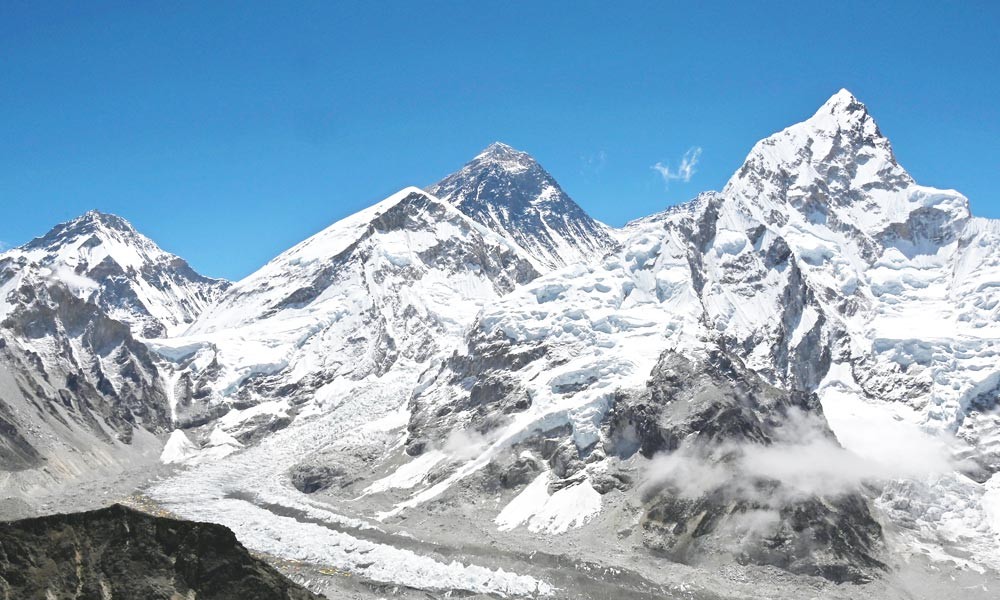
You have to understand that while doing Himalayan trekking adventures, things might not always go according to plan. Due to climate, weather, trail conditions, and other factors, your itinerary plans may be stretched.
You will also have to consider the health factors where you may need to take more time to acclimatize before heading on to higher altitudes. Thus, accounting for all these factors, you should be flexible and have a few contingency days in your trek, especially if this is your first time doing a high-altitude trek.
Having a few extra contingency days will help your trek at ease, and honestly, you might need as you shouldn’t push your body to its extent during the Himalayan journey. You will also get the opportunity to move freely and won’t have to rush with the itinerary plans. Furthermore, if you don’t end up using the contingency days during the trek, you can use them later to do sightseeing tours around the popular tourist destinations in the country.
Everest Base Camp Trek Itinerary Plan
This is the ideal itinerary for the Everest Base Camp Trek for beginners. Marvel Advneture’s 12 Day Everest Base Camp Trek is specially designed for trekkers who want to experience a comfortable and immersive journey. This exciting trekking package also included two acclimatization days at the strategic locations, so trekkers can rest and acclimatize properly to relish a safe and thrilling Himalayan excursion.
Day 01: Start of your trekking journey, Kathmandu to Lukla flight and trek to Phakding
Kathmandu Altitude: 1,400 meters/ 4,593 feet
Lukla Altitude: 2,860 meters/ 9383 feet
Phakding Altitude: 2,610 meters/ 8,562 feet
Altitude Gain: 1,400 meters/ 4,593 feet
Trek Distance: 7.4 km/ 4.6 miles
Trek Duration: 4 hours
Flight Duration: 35 minutes
The thrilling flight on this day will be something you will always treasure. Your trekking guide will pick you up from your respective hotel and take you to the Tribhuvan International Airport, from where you will set out on your iconic Himalayan adventure.
After landing at Lukla, you will follow the trekking trails alongside the banks of the Dudh Koshi River. Walking through the Chauri Kharka Village, you will make your descent to Dudh Koshi Ghat and follow the trails toward Phakding Village.
Day 02: Trekking from Phakding to Namche Bazaar
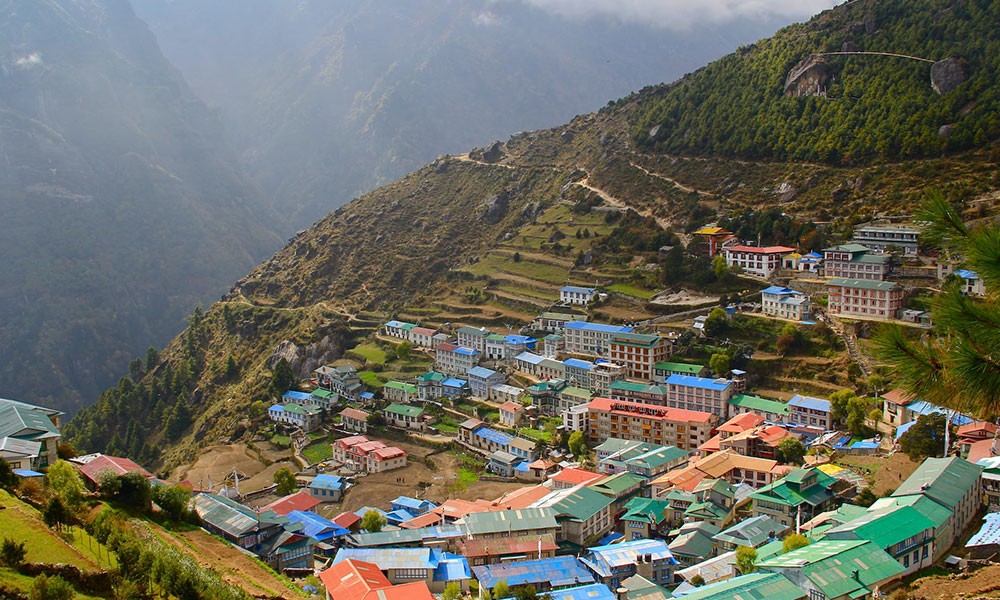
Phakding Altitude: 2,610 meters/ 8,562 feet
Namche Bazaar Altitude: 3,440 meters/ 11,286 feet
Altitude Gain: 830 meters/ 2,723 feet
Trek Distance: 7.4 km/ 4.6 miles
Trek Duration: 6 hours
It is another day’s exciting trekking adventure today. You will trek alongside the north bank of the Dudh Koshi and enter Sagarmatha National Park from Monjo. You will also be able to catch the first glimpse of Mt. Everest on this day as you slowly ascend toward Namche Bazaar.
Day 03: Rest and exploration day at Namche Bazaar
Namche Bazaar Altitude: 3,440 meters/ 11,286 feet
You have climbed over a significant altitude of over 2,500 meters, so it is time to let your body get a proper rest here before moving further. Do some short hikes around Namche on this day, and don’t forget to explore the popular highlights in the region, like Khunde and Khumjung Villages, Syangboche Airstrip, Everest View Hotel, Hillary School, and Sherpa Culture Museum on this day.
Day 04: Trek from Namche Bazaar to Tengboche
Namche Bazaar Altitude: 3,440 meters/ 11,286 feet
Tengboche Altitude: 3,874 meters/ 12,709 feet
Altitude Gain: 434 meters/ 1,423 feet
Trek Distance: 9.2 km/ 5.7 miles
Trek Duration: 6 hours
It is time to move further ahead in your trekking journey; you will have to overcome several ups and downs on this day’s route. Although the trekking route is demanding, the magnificent views of Everest, Ama Dablam, Lhotse, and Thamserku will make every moment magical. After crossing a small Sherpa village of Phunki Tenga, you will then reach the spiritual atmosphere of Tengboche Monastery.
Day 05: Tengboche to Dingboche trekking
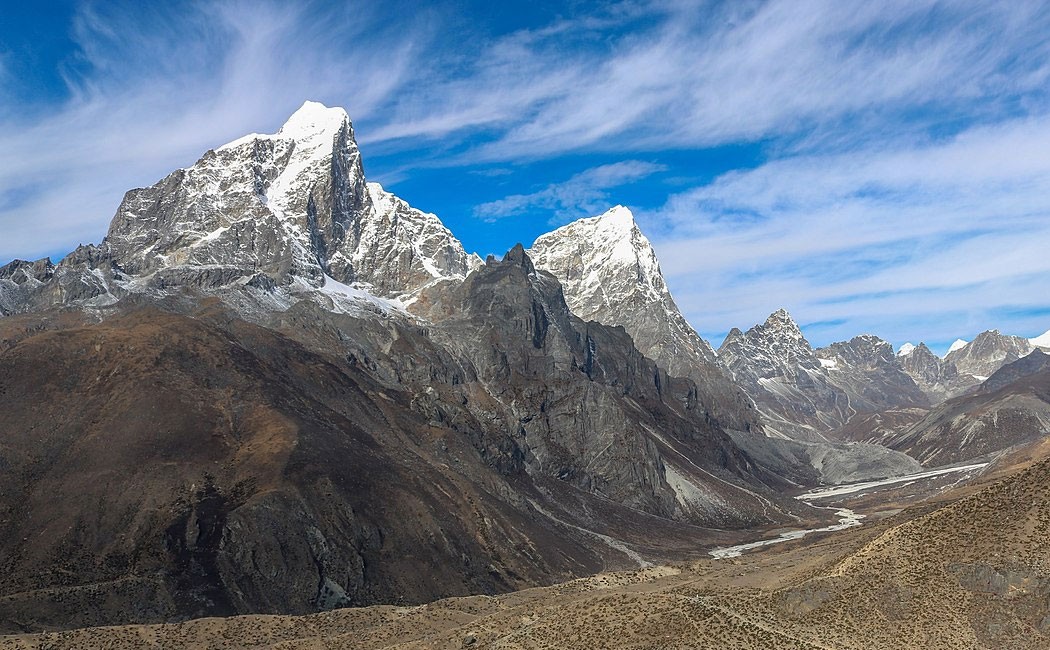
Tengboche Altitude: 3,874 meters/ 12,709 feet
Dingboche Altitude: 4,400 meters/ 14,435 feet
Altitude Gain: 526 meters/ 1,725 feet
Trek Distance: 12 km/ 7.4 miles
Trek Duration: 5 hours
Today’s trek takes you to a significant altitude in the Everest region; thus, you are recommended to stay hydrated and trek slowly. This day’s trek will proceed alongside the Lobuche River, and you will enter the Imja Valley following the inclining trail. After crossing Pangboche Village, you will follow a steep climb to reach Dingboche.
Day 06: Acclimatization day at Dingboche
Dingboche Altitude: 4,400 meters/ 14,435 feet
It's time for another acclimatization day; you will use this day to let your body rest and adapt to the new environment above 4,000 meters. Nagarjun Hill (5,100 meters), and Nangkatshang Peak (5,083 meters) are some of the most popular hiking destinations in this acclimatization day.
Day 07: Dingboche to Lobuche trek
Dingboche Altitude: 4,400 meters/ 14,435 feet
Lobuche Altitude: 4,940 meters/ 16,207 feet
Altitude Gain: 540 meters/ 1,771 feet
Trek Distance: 8.5 km/ 52 miles
Trek Duration: 5 hours
After enjoying an acclimatization day, you will continue with your gradually elevating route. You will first trek across the small Sherpa village of Thukla, and as you move further, you will pass the memorial ground for expeditioners who died on Everest, Thukla Pass, before reaching Lobuche.
Day 08: Trekking from Lobuche to Gorakshep to Everest Base Camp
Lobuche Altitude: 4,940 meters/ 16,207 feet
Gorakshep Altitude: 5,180 meters/ 16,994 feet
Everest Base Camp Altitude: 5,364 meters/ 17,598 feet
Altitude Gain: 424 meters/ 1,391 feet
Trek Distance: 15 km/ 9.32 miles
Trek Duration: 7 to 8 hours
This is the most significant day in your Himalayan journey. Today, after leaving Lobuche, you will follow the moraines of Khumbu Glacier to reach Gorakshep. From there, overcoming the gravel and loose stone trail alongside the glacier, you will finally reach the Everest Base Camp. After exploration, you will return back Goraskhep to rest for the night.
Day 09: Morning hike to Kalapatthar and trekking down to Pheriche
 Gorakshep Altitude: 5,180 meters/ 16,994 feet
Gorakshep Altitude: 5,180 meters/ 16,994 feet
Kalapatthar Altitude: 5,644 meters/ 18,519 feet
Pheriche Altitude: 4,371 m (14,340 ft)
Altitude Gain: 809 meters/ 2654 feet
Trek Distance: 9.6 km/ 5.9 miles
Trek Duration: 7 to 8 hours
This is another glorious day of your trekking, today, you will do an early morning hike to Kalapatthar. From this highest vantage point in the Khumbu region, you will be able to enjoy the panoramic views of Everest, Nuptse, Lhotse, Changtse, and other surrounding peaks including the pristine views of Khumbu Icefall. You will then trek down to Pheriche for overnight stay.
Day 10: Trek down to Namche Bazaar from Pheriche
Pheriche Altitude: 4,371 m (14,340 ft)
Namche Bazaar Altitude: 3,440 meters/ 11,286 feet
Altitude Loss: 931 meters/ 3054 feet
Trek Distance: 14.3 km/ 8.8 miles
Trek Duration: 7 to 8 hours
As your Himalayan quest is over, you will now gradually start climbing down to the starting point of this trek. Following a relatively easy downhill trail, you will trek down from Pheriche to Namche Bazaar via Tengboche.
Day 11: Trekking from Namche to Lukla
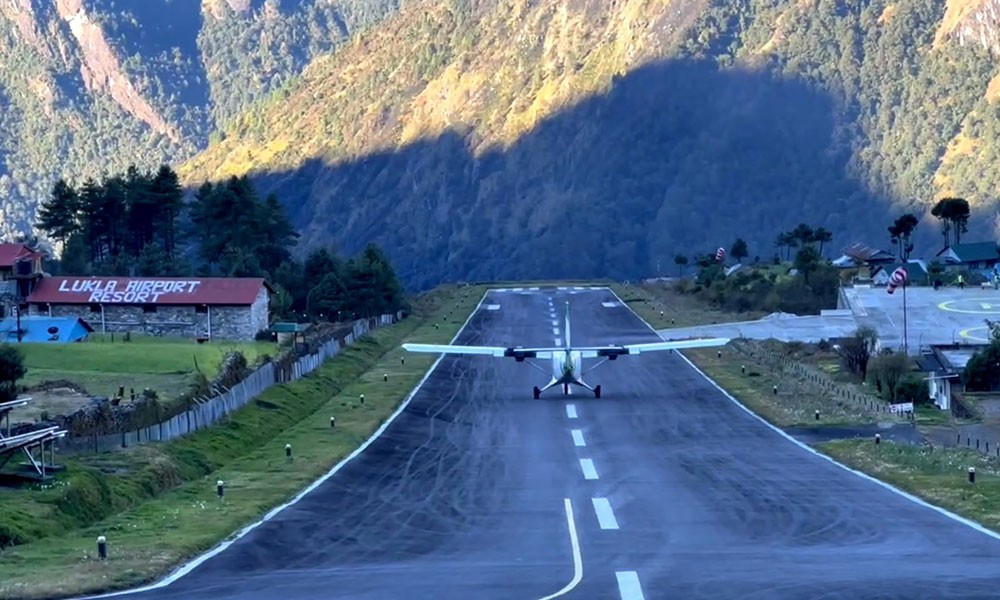
Namche Bazaar Altitude: 3,440 meters/ 11,286 feet
Lukla Altitude: 2,860 metres (9,383 ft)
Altitude Loss: 640 meters/ 2,099 feet
Trek Distance: 13.5 km/ 8.3 miles
Trek Duration: 5 to 6 hours
From Namche, you will trek alongside the banks of the Dudh Koshi River. You will cross many suspension bridges on this day’s trekking trail and pass local villages before reaching Lukla. This will be your last night on the mountain in this trek; relish the mystical Himalayan ambiance before bidding farewell to it.
Day 12: Flight back to Kathmandu from Lukla
Lukla Altitude: 2,800 meters/ 9,186 feet
Kathmandu Altitude: 1,400 meters/ 4,593 feet
Altitude Loss: 1,400 meters/ 4,593 feet
Flight Duration: 35 minutes
You will take an morning flight from Lukla to Kathmandu after breakfast. You will enjoy a free leisure afternoon after getting some rest. Most of the trekking package itinerary plans end on this day if they don’t oversee your international departure plans.
What is the Best Time for the Everest Base Camp Trek?
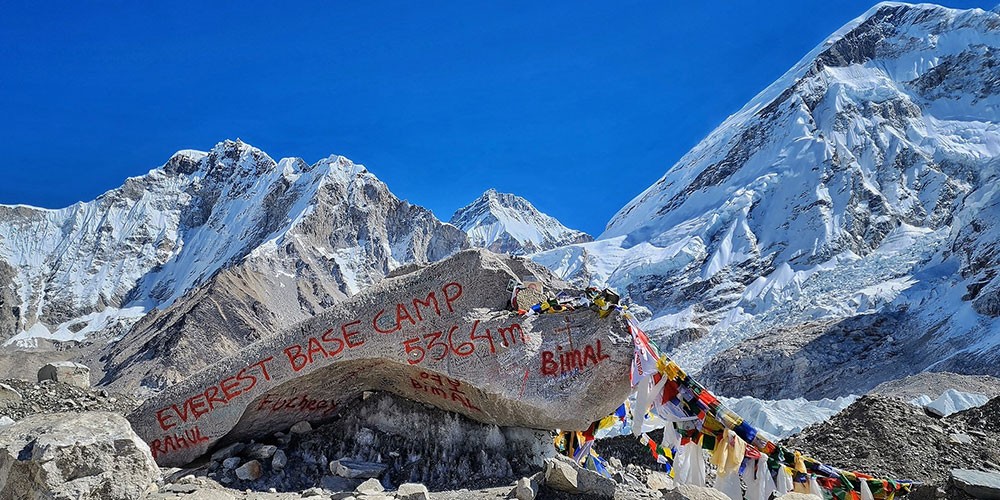
Everest Base Camp can be done throughout the year, but to generalize the season based on popularity, spring (March, April, and May) and autumn (Septemeber, October, and November) are the most beloved seasons for this Himalayan trek. Due to the stable climate, weather conditions, and pleasant temperatures, the trekking experience in these high seasons is simply outstanding.
As we are discussing Everest Base Camp for beginners, I would also recommend this peak season for a more comfortable and enjoyable experience. Spring, nature’s peak season, covers the entire landscape with stunning visuals of wildflowers and lush greenery. Similarly, it is also the best period to experience the Himalayan wilderness and explore the endangered flora and fauna of the Sagarmatha National Park.
Autumn, on the other hand, is mostly popular for the clear Himalayan vistas, driest trekking trails, incredible hues of the fall season, and fascinating celebrations. Autumn has also been ranked as the number-one season for Himalayan trekking adventures in Nepal due to those factors. So, if you want to enjoy an immersive trekking experience under a pleasant climate and with the opportunity to experience cultural prospects of the country, this is the time to be in Nepal.
Temperature of Everest Region in Different Seasons
Everest Region Temperature in the Spring (March to May): 17°C to 25°C (average)
Everest Region Temperature in the Autumn (Septemeber to November): 12°C to 17°C (average)
Everest Region Temperature in the Monsoon (June to August):17°C to 30°C (average)
Everest Region Temperature in the Winter (December to February):5°C to 15°C (average)
You may also like:
Everest Base Camp Trek Difficulty Level
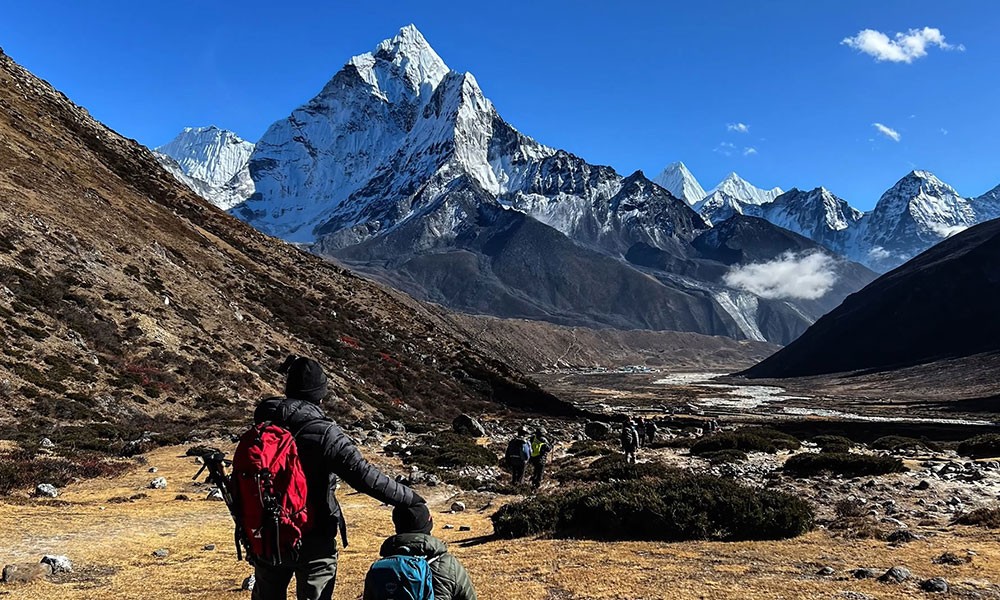
The difficulty level of the Everest Base Camp Trek is at a moderate level. During this Himalayan journey, you will not have to traverse physically exhausting or technically demanding sections along the trail. However, as this is a high-altitude trek that navigates the remote northeastern part of the Himalayas, there are a few difficulty factors you have to take into consideration.
The first one you have to be on the lookout for is the altitude gain aspect of this exploration. Starting your trek at Lukla (2,800 meters), you will reach the highest point of this trek at Kalapatthar (5,645 meters). So, the overall altitude gain from the starting point of this trek is 2,846 meters/ 9,337 feet. If you don’t acclimatize properly and follow proper Acute Mountain Sickness (AMS) precautionary methods, then the risk of altitude sickness is signficiant as you will traverse across terrain that is of 4,000 to 5,000 meters elevation.
Similarly, you need to walk for a total distance of 130 km (80 miles) in this trek. Although the trails are not technical nor are they physically strenuous, they are still demanding and you will need a good amount of stamina to trek about 6 to 7 hours on average during each trekking day. So, don’t slack off during training, which will enhance the overall experience.
Note: The success rate of Everest Base Camp Trek with Marvel Adventure is 95% to 97%; we offer fully guided trekking packages and guarantee a safe and fulfilling journey that you will always treasure.
